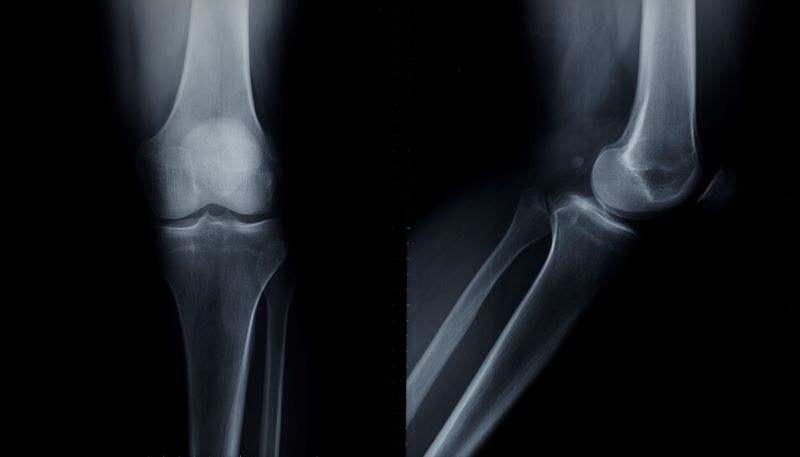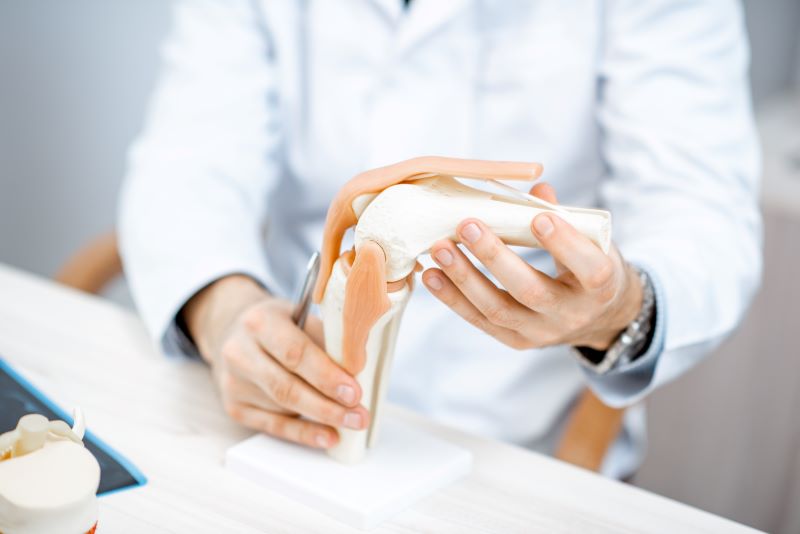Bone spurs can be among the most painful and debilitating medical conditions. This condition is especially common in people aged 60 or older, with around 40% developing symptoms from their bone spurs, requiring medical treatment. With increased commonality due to age, you may wonder about the specific details of bone spurs, including their definition, how they occur, and the bone spur treatment options. In this article, we’ll discuss what a bone spur is, what causes bone spurs, whether surgery is necessary for bone spurs, and how you can start the journey to effective relief from your bone spurs today.
 What Is a Bone Spur?
What Is a Bone Spur?
Despite what the name may imply, a bone spur is a bony, smooth outgrowth that develops over a long amount of time. They grow out of a normal bone where the bone ends meet in a joint, typically around the areas of cartilage, ligament, joint, or tendon injury and inflammation. When your body detects inflammation or an injury, it triggers a response in the cells to repair damages by producing added bone in the affected area. Common locations for bone spurs are the shoulders, knees, hands, hips, ankles, feet, and spine. Bone spurs typically occur or become more likely as you age, and many go undetected for years.
Bone spurs become more common as you age due to the body undergoing natural degenerative changes. In many cases, bone spurs are small and only discovered with an imaging study or X-ray done for another reason. Bone spurs can, however, cause pain and other symptoms as they compress and affect nearby nerves and tissues. Symptoms include stiffness, less movement, and pain in the affected area. Spurs may irritate the rotator cuff tendons, leading to tendonitis or tendon tear. They may develop in the finger joints, causing a knobby appearance. They can also occur in the knees, hips, ankles, and feet, causing pain and stiffness.
 What Causes Bone Spurs?
What Causes Bone Spurs?
Inflammatory injuries, such as plantar fasciitis and Achilles tendonitis can cause bone spurs to develop on the heels. A leading cause of bone spurs is degenerative arthritis, or osteoarthritis, in the weight-bearing joints of the knees, spine, and hips. Also referred to as wear and tear arthritis, it occurs when the layer of cartilage protecting the joints starts to wear away. The body tries to repair the loss of cartilage by creating more bone around the affected joint. The cushioning between the bones of your spine and your joints can wear down as you age. Lupus, gout, and rheumatoid arthritis can also cause joint damage.
Bone spurs also frequently develop after an injury to a tendon or joint as the body tries to repair it by adding bone to the affected area. Other causes include genes, poor posture, overuse, obesity, diet, narrowing of the spine, and bone problems you may have been born with. The lumbar and cervical spine are among the most common areas for bone spur development. Vertebral spurs can compress the spinal cord or nearby nerve roots, causing a narrowing of the spine’s open spaces. Spinal cord or nerve root compression in the lumbar spine leads to sciatica or pain, numbness, tingling, and weakness in the lower back, leg, and buttocks.
Bone Spur Treatment
Without noticeable symptoms, you may not notice you have a bone spur until you have a test or X-ray for a different medical condition. If you experience stiffness, loss of motion, and pain in one or more areas bone spurs develop, you should consult a specialist. Especially for bone spurs that develop in your feet, an experienced podiatrist can provide you with a diagnosis and determine the proper treatment plan for you. Your podiatrist will begin by asking for a description of your symptoms and medical history. Then, they will usually ask you to rate your discomfort or pain and perform a physical exam.
A physical examination usually includes testing your strength and range of motion in the affected area. The podiatrist may also order imaging tests, such as an X-ray, to check for arthritis and spurs, or an MRI or CT scan to check for damaged tendons or ligaments. Foot pain is fairly common and can have many causes and levels of severity. Your feet are very important for proper mobility and functionality of your body, making health, treatment, and recovery from pain and conditions a top priority. With the right diagnosis and treatment plan, you can relieve your pain sooner, avoid worsened pain and conditions, and proceed with a high quality of life.
 Bone Spur Surgery
Bone Spur Surgery
As there can be many different causes and levels of severity to your bone spurs, appropriate treatment plans can vary. Depending on the location, causes, and severity of your bone spurs, your specialist may recommend a more conservative treatment plan. If a less-invasive treatment plan fails to relieve your bone spurs and pain, or if your condition worsens, the specialist may recommend a more advanced treatment technique to provide you with effective, lasting relief and recovery. Advanced treatment plans, such as surgery may be necessary for your bone spurs.
A bone spur surgery is a procedure to remove the bone spur, using one or more minor incisions near the spur. The specialist will then remove the bone piece with small tools. Your necessary bone spur surgery may also be arthroscopic, done using several minor incisions and a viewing tube referred to as an arthroscope. Otherwise, the specialist may perform open surgery, making one larger incision. After your bone spur surgery, you may experience less pain. If it was a joint spur, you may also have more easy mobility. Bone spur removal can also prevent future problems.
Treatment and Relief of Your Bone Spurs
Bone spurs can cause various types of pain in some of the most important areas of your body, deeply affecting your mobility and quality of life. For early, effective, and quality diagnosis, treatment, and relief of your bone spurs, contact the Foot & Ankle Specialists of Illinois today.

